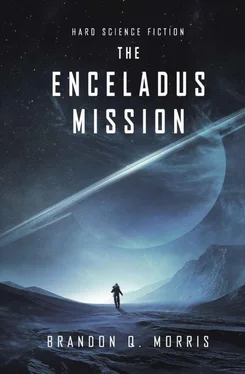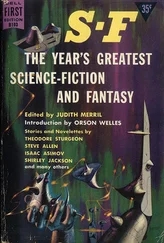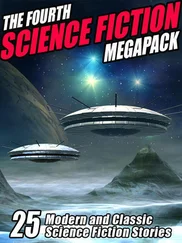Reality, when it came, turned out to be much worse—and much better. He did not have to vomit, only because his digestive system chose another way out. He had concentrated on his task for 20 hours, the entire duration of the trip. For the whole time he tried to avoid looking into the abyss next to him, below him, behind him, and above him. He did not always succeed, but when he started to stagger, Hayato took his hand. Most of the time, though, Martin’s strategy worked. He had felt best when he connected himself with a restraining strap to the external control console of the Direct Fusion Drive, and crawled inside a two-meter-long closed tube that reeked of oil. Then he had been in his element. The engine responded to his commands. He had no problems adapting the launch sequences to the supposed zero gravity. The problem the developers had not been able to solve on Earth was that liquids moved differently up here than under Earth’s gravity. This could be simulated and calculated, of course, and the Japanese engineer had succeeded in doing that very well. However, somebody had to adapt the results achieved by this method to reality.
“That was it,” Hayato had finally said. Only then did Martin realize he had just spent two consecutive hours in space without getting dizzy. He had not been able to take off the adult diaper he still wore from launch, and now it was starting to chafe. During the landing, though, he was glad he still had it on.
“Nice trip, see you next time,” the Japanese man said, bidding him farewell.
Martin shook his head. “No one will ever get me into one of those things again,” he said. “But it was interesting to meet you. We have to talk sometime about the algorithms for the thermodynamic simulation of fluids. You solved that quite elegantly!”
The Japanese engineer gave him an inscrutable smile and took his leave.

July 16, 2038, NASA
The most important task of the Enceladus project was to find the final proof for the existence of life. To do so, astronauts must catch life red-handed, which could only be expected in the salty ocean below the several-kilometers-thick ice crust. How could you dig such a deep hole with the limited resources of an interplanetary expedition, no more than six crew members, and no giant drilling rigs?
The Europeans had the most extensive experience with such drilling attempts. They had reached a depth of 10 meters on Mars during their unsuccessful quest to find traces of life there. One could not learn very much from this, though. On Enceladus, temperatures were expected to reach minus 180 degrees Celsius. Ice would be as hard as steel, and metal drills would become brittle.
NASA’s engineers came up with several ideas. They considered, for instance, landing a spacecraft vertically on the moon so the heat of its rocket engines would blast a hole into the ice. The 10-megawatt fusion drives would most definitely be involved in this. A non-flyable DFD prototype was taken to a glacier in Alaska to test the method. The energy proved sufficient for a sizable hole, but the jet of hot air could not be sufficiently focused. Instead, as it went deeper, the hole became wider and wider. It did not form a cylinder, as intended, but a cone with the tip facing downward. The engineers extrapolated that the pit would have to be over a kilometer wide to reach a depth of five kilometers. And how could they keep the rocket engine centered above it as the cone widened? The reason this idea was finally rejected was a different one, however—it turned out the melting water became more polluted by radioactivity than expected, which was not good for most forms of life. However, the experiment had shown that, against ice, heat was a better weapon than a mechanical drill.
How could they heat a device for a sufficient period of time? It soon became clear that adding energy once—like filling a hot-water bottle—would never be sufficient, unless one detonated an atomic bomb, or even better, a hydrogen bomb. This meant the drill head had to carry its own heat source. Space exploration had used a reliable, if not particularly popular, method for tapping into an inexhaustible source of heat—the decaying energy of radioactive materials. The engineers searched through their arsenal. Even the Cassini probe that had found the first indicators for life on Enceladus back in 2015 had contained an RTG, or Radioisotope Thermoelectric Generator, that generated electricity through the decay of plutonium-238. Enceladus Life Finder used the same proven technology 16 years later.
Unfortunately, mathematics threw a monkey wrench into the NASA researchers’ project. How much energy is needed to heat a five-kilometer-deep, almost two-meter diameter ice cylinder to the melting point, and then fully melt it? The crust of Enceladus might as well have been made of iron—it wouldn’t have made the task any more complicated. A best-case scenario showed them reaching a depth of five kilometers in 200 days. To do this, the drill vehicle would have to carry along approximately one and a half tons of plutonium. For the Cassini probe, about 20 kilograms of the highly radioactive material had been enough. The decisive factor turned out to be money. A kilo of plutonium-238 cost about 10 million dollars, so a ton and a half would cost 15 billion dollars and thus devour a big part of the budget, not to mention the fact there was not that much plutonium available worldwide.
A Nordic spirit creature who leads the honorably slain to Valhalla finally solved the problem— Valkyrie , the ice drill owned by the private-sector company Stone Aerospace. The device had already been successfully tested in Antarctica, though only using an unmanned version measuring 30 centimeters in diameter. The company was confident it could use the design for a model with a diameter of two meters, and that was enough incentive for NASA to finance the project. Valkyrie did not need an on-board heating plant, since it received all of its energy from the outside via a fiber-optic cable connected to a powerful laser. The cable itself must be less than a millimeter thick. It served as an umbilical cord that provided the drilling vehicle with the necessary energy, and also allowed for data transmission. The range was limited only by the length of the fiber-optic cable carried aboard. NASA specialists had demanded 100 kilometers, and in the light of the hundreds of millions offered, Stone Aerospace had gladly accepted any request. However, the space agency itself was supposed to be responsible for an energy source providing several megawatts of power to the laser while the vehicle was on Enceladus. At first the NASA specialists considered, with some misgivings, a small nuclear reactor, but then the fusion drives solved this problem.
Nevertheless, it took until 2038 before the first large Valkyrie became operational. No one seemed to have the time to come up with a new name, so the old one stuck.
The initial trial failed in a grandiose manner. In June of 2038, a team of technicians tested a new version on an Alaskan glacier that the U.S. government, for this very purpose, had excluded from national park status. The drill vehicle was transported on a cargo ship and was finally air-lifted to the glacier by a large helicopter. As the technicians tried to unhitch the carrying cable from the helicopter, Valkyrie started to slide. It was a perfect example of faulty planning leading to a disaster. No one had considered that a giant tube of steel might begin to move in an undesired manner on uneven ground. The helicopter carried the drill vehicle back to the cargo ship.
Afterward, the technicians needed a week to level the starting area and to build scaffolding. The engineers had somehow forgotten that Valkyrie must be placed in a vertical position in order to drill into the ice. They had simply upscaled the miniature model that could be held upright by two men, and made a larger variant. Despite this, the company director, Stone Jr., son of the company founder and reputed to be a hothead, did not fire any employees.
Читать дальше













